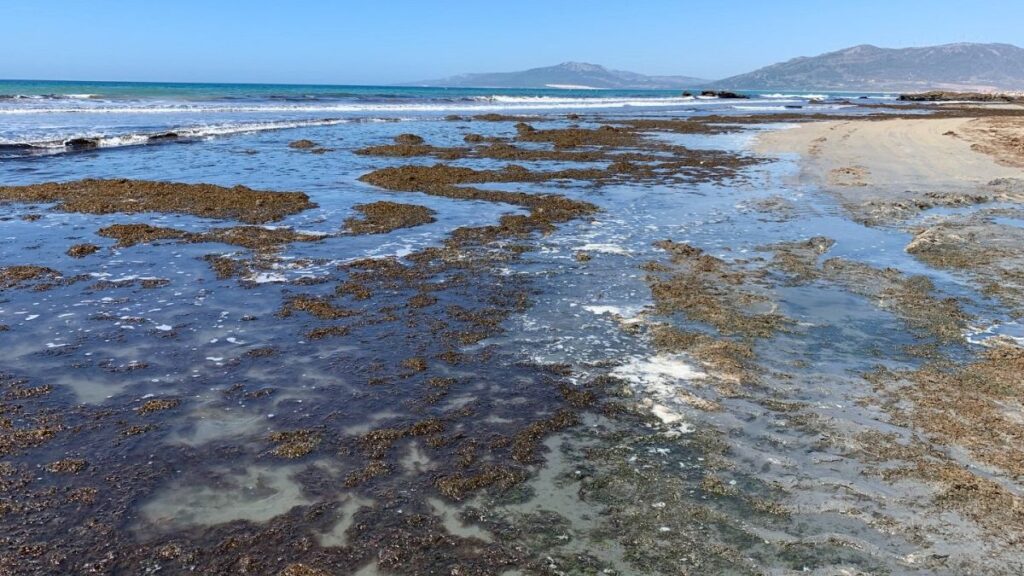Published on
Since May 2025, local authorities in Cádiz have removed 1,200 tonnes of this algae from La Caleta, the city’s most popular beach, including a maximum of 78 tonnes in a single day. “We are completely overwhelmed. This is an environmental catastrophe,” declared José Carlos Teruel, head of beaches for the Cadiz city council, who added that every time a westerly wind blows, they know they are in for another wave of seaweed.
The species, ‘Rugulopteryx okamurae’, which is believed to have arrived in the ballast tanks of ships passing through the Suez Canal and unloading in the Mediterranean, has colonised the Strait of Gibraltar, much of the southern Spanish coast, the Canary Islands, the Azores and, further north, the Cantabrian Sea and the Basque Country in little more than a decade. It was first detected ten years ago in Ceuta by a researcher from the University of Malaga.
Devastating economic and ecological impact
The algae is having a significant negative impact on multiple sectors of the local economy. Tourism in Cadiz and Tarifa, a popular destination for windsurfers, is affected by the massive presence of this algae on the beaches, which also produces a very unpleasant smell. Fishing activity also suffers the consequences, as the algae trap the fishermen’s nets and lines, as well as depleting the oxygen in the seawater.
The most worrying impact is on biodiversity. At La Caleta beach, the algae has displaced many native plants, and it is not yet clear whether this damage is temporary or irreversible. ‘Rugulopteryx okamurae’ attaches itself to rocks and other surfaces, eliminating native algal species. Its lack of natural predators in the region, combined with its ability to reproduce both sexually and asexually and to absorb toxins, makes it virtually impossible to eradicate, according to experts.
Juan José Vergara, professor of biology at the University of Cadiz, explains that in the first phase of such an invasion it can be controlled, “it’s like detecting a cancer in time before it spreads”. However, the current scale makes control impossible, and what reaches the beaches is only a fraction of what exists underwater.
From problem to energy resource
Currently, seaweed is dumped in landfills, which is an additional cost to taxpayers. A local company that recycles seaweed to make beverage containers or use it as fuel and fertiliser has applied for permission to use ‘Rugulopteryx okamurae’ as biomass for energy production.
However, Spanish legislation on invasive species prohibits their commercial exploitation unless they pose a threat to health and safety or to facilitate their eradication, conditions that would appear to apply in this case. This week, the Andalusian regional government launched a four-party plan to tackle the crisis, based on research, monitoring and education, which includes options for recycling the algae.
Although the regional government will have to negotiate with the environment ministry to use the algae as biomass, Vergara warns that even if an agreement is reached, this measure can only be part of the solution. “It is an interesting idea, but I doubt it can eradicate or even significantly decrease the intensity of the invasion when hundreds of thousands of tonnes can reach a single beach,” he concludes.
Read the full article here

